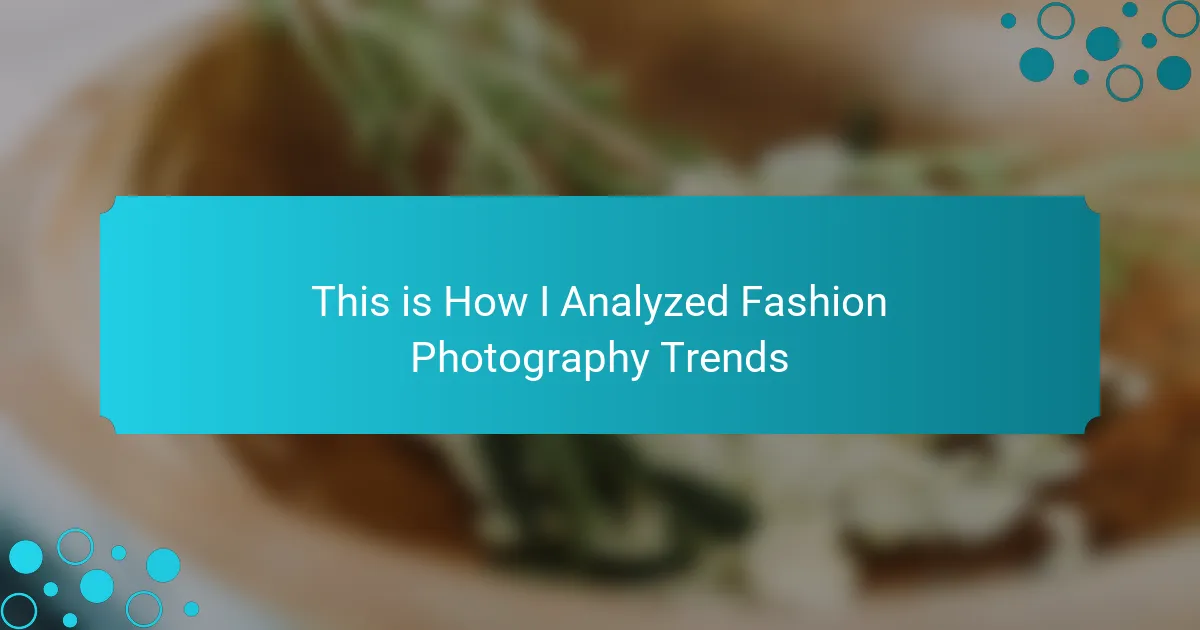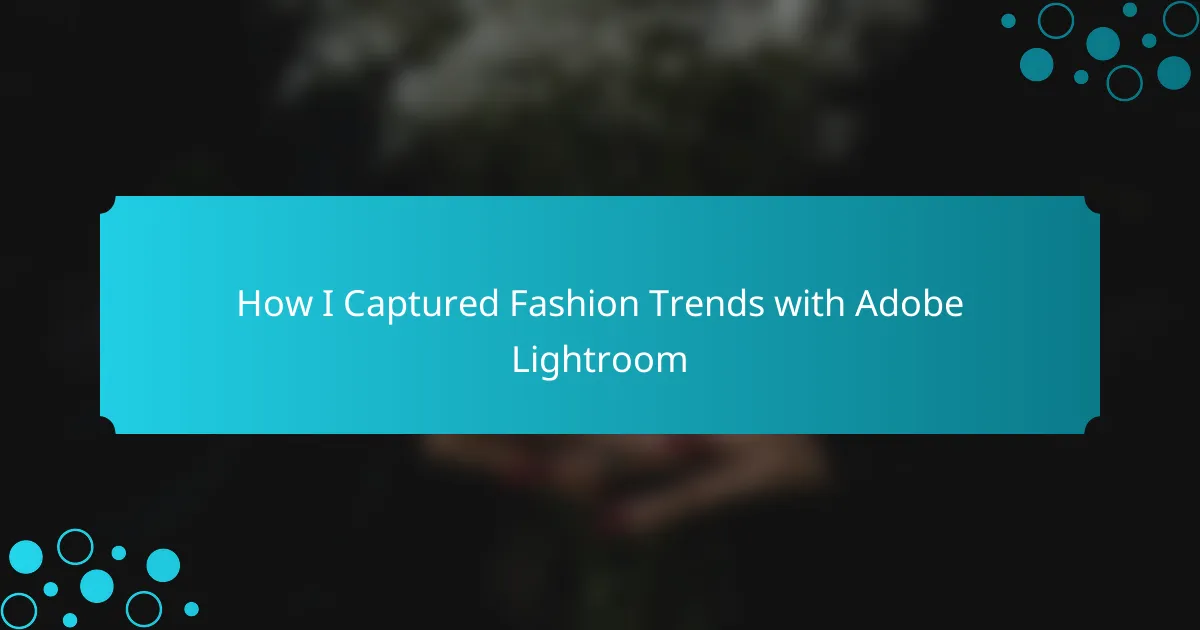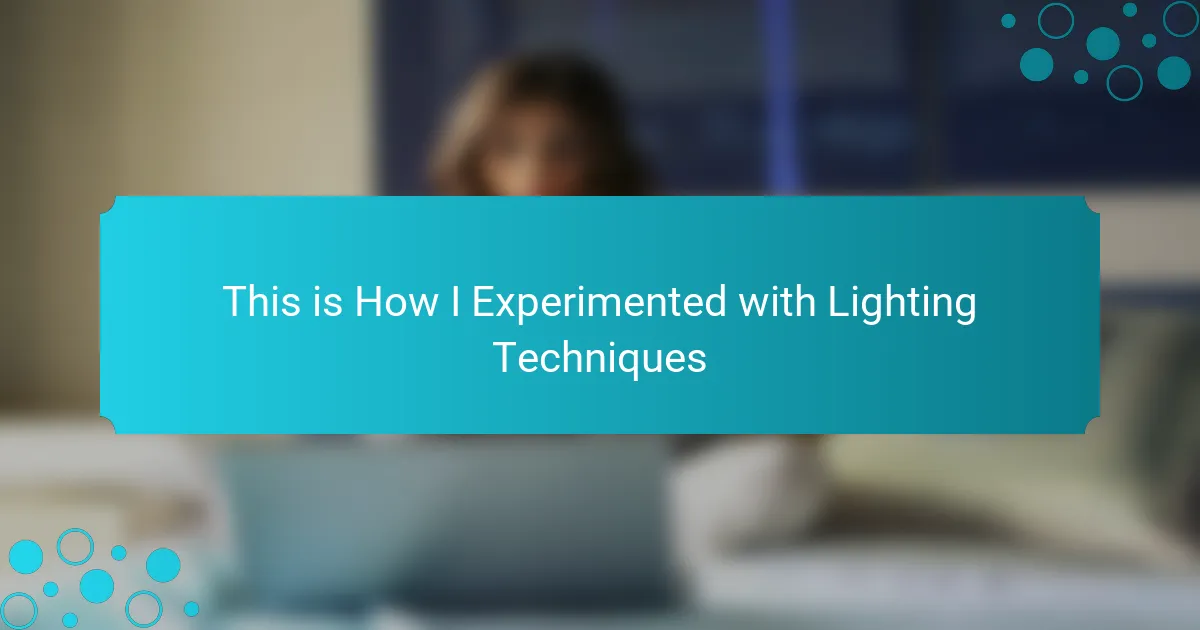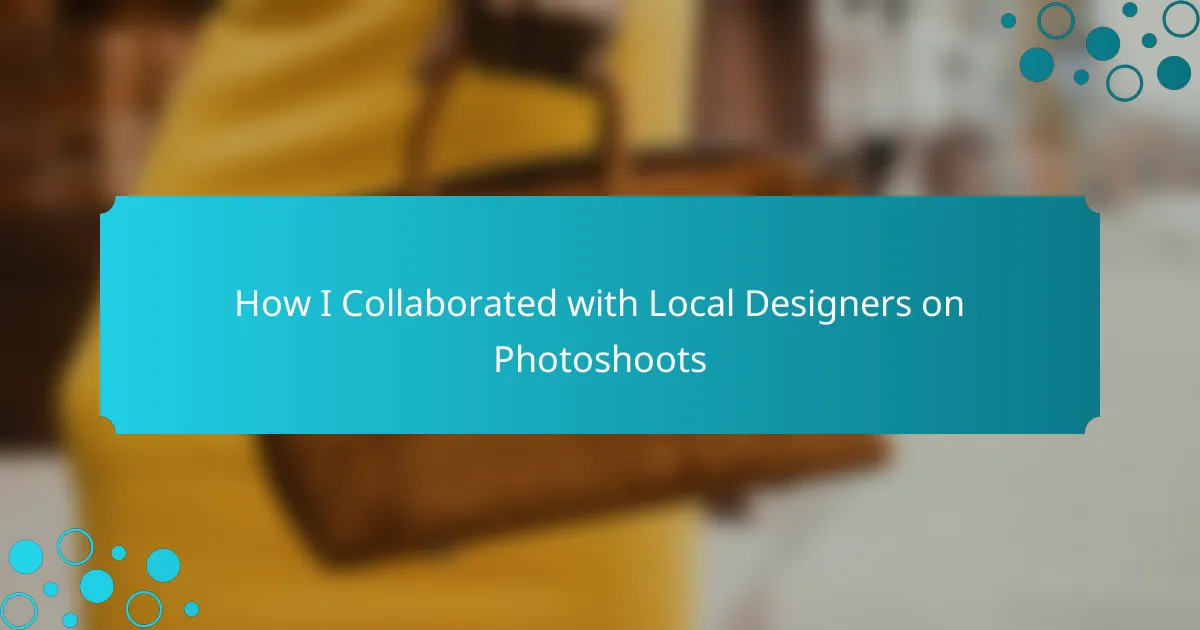Key takeaways
- Fashion photography is an art that conveys emotions and tells stories, relying on composition, lighting, and model expressions.
- Paris Fashion Week is pivotal for global fashion creativity, acting as a cultural bridge and inspiring new trends.
- Essential photography techniques include mastering angles, lighting, and capturing genuine emotions to enhance storytelling.
- Building a photography portfolio involves curating diverse images that reflect personal experiences and evolve with artistic growth.
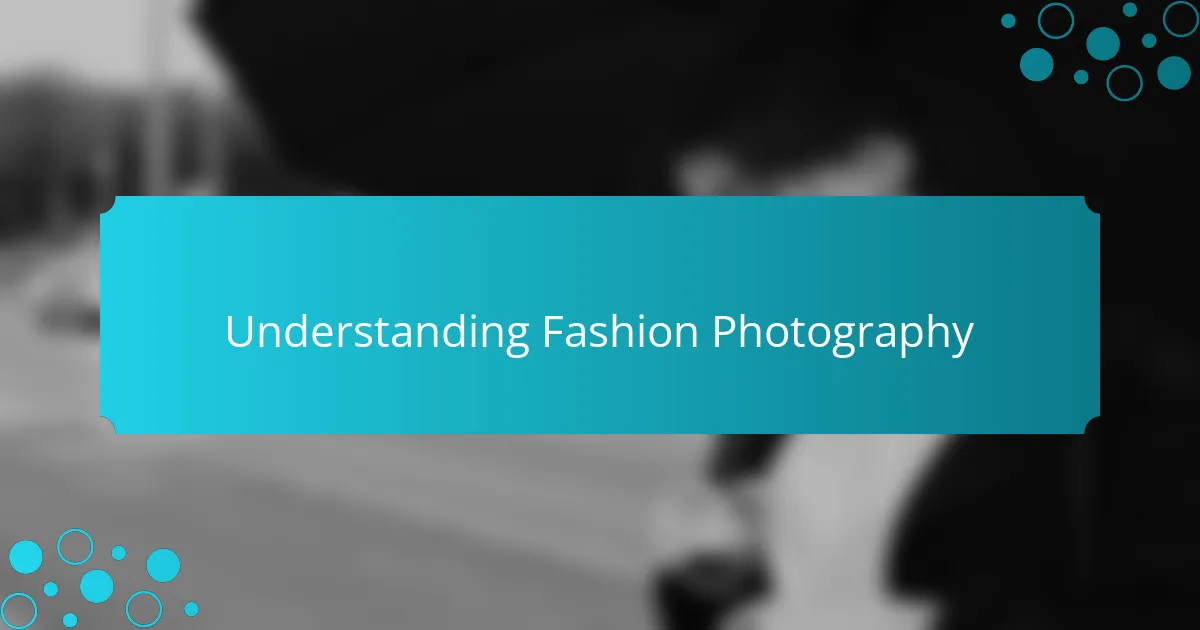
Understanding Fashion Photography
Fashion photography is an art form that goes beyond simply capturing clothing; it tells a story and conveys emotions. During my experiences at Paris Fashion Week, I noticed how each photo encapsulated the spirit of the moment, with the models and the attire breathing life into the scenes. I often found myself mesmerized by the creativity, not just in the designs, but in how they were presented, sparking a sense of connection between the viewer and the art.
The technique of fashion photography relies heavily on composition, lighting, and the unique expressions of the models. I remember a particular moment when I captured a shot of an avant-garde dress illuminated by the soft glow of sunset; the colors and textures seemed to dance, creating a visual poetry that I will never forget. Each picture is a powerful reminder of the diverse narratives that fashion can express.
Below is a comparison table highlighting some essential aspects of fashion photography versus other forms of photography.
| Aspect | Fashion Photography |
|---|---|
| Focus | Clothing and accessories, model’s expression |
| Style | High impact, artistic, often editorial |
| Purpose | To promote brands, evoke emotions, tell stories |
| Location | Runways, studios, glamorous outdoor settings |
| Lighting | Bold, dramatic, or soft depending on theme |
| Model Interaction | Dynamic poses, expressive gestures |
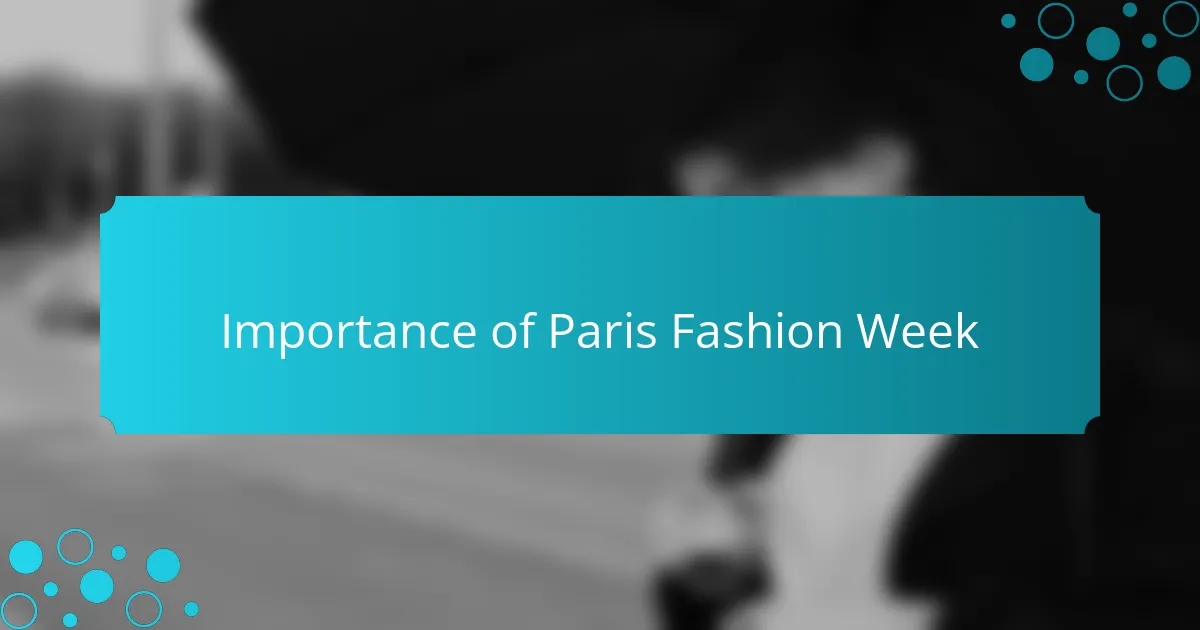
Importance of Paris Fashion Week
The significance of Paris Fashion Week cannot be overstated; it’s the epicenter of global fashion creativity and innovation. Each season, designers unveil their most daring collections, challenging norms and inspiring new trends. I recall standing front row, surrounded by fashion influencers and industry giants, all eagerly anticipating the fresh perspectives about to grace the runway.
What truly strikes me is how Paris Fashion Week serves as a bridge between fashion and culture. From the elegant streets of the Marais to the iconic Eiffel Tower, every detail is infused with an artistic spirit that reflects the city’s rich history. I often found myself thinking, how does this vibrant atmosphere influence the collections? It’s fascinating to see how these elements combine, transforming mere fabric into a language of expression, identity, and artistry.
Moreover, attending Paris Fashion Week allows photographers like myself to capture authentic moments that resonate far beyond the event itself. I remember snapping a candid shot of a model laughing with her designer backstage; that fleeting moment told a story of passion and collaboration. Such glimpses remind us that fashion is not just about clothes; it’s about the emotions and relationships that shape the industry.
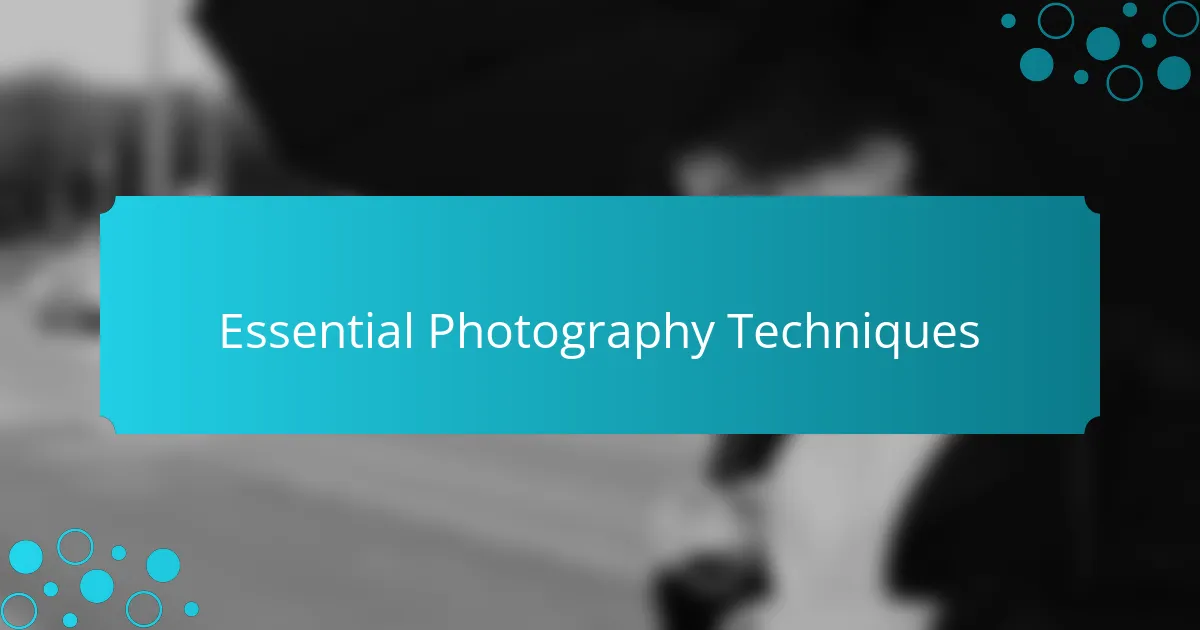
Essential Photography Techniques
Capturing the vibrancy of fashion events demands an acute understanding of composition and framing. I remember the exhilaration of adjusting my angle to capture a model poised against a striking backdrop. It’s often in those split seconds — when a model’s pose aligns just perfectly with the setting — that a photo transforms from ordinary to evocative. Have you ever experienced that rush, knowing you’ve caught something special?
Lighting plays a critical role in elevating fashion photography. During one particularly stunning show, an overhead spotlight illuminated a model in a way that accentuated the intricate details of her outfit. I adjusted my settings quickly, embracing the dramatic contrast it created between light and shadow. It struck me how effective manipulation of lighting could evoke emotions; it’s almost like painting with light.
Lastly, don’t underestimate the power of capturing genuine emotions. One moment that stands out is when I caught a candid shot of a designer’s reaction as his collection received applause. The joy, pride, and relief were palpable. It taught me that behind every stunning image, there’s often a deeper narrative waiting to be unveiled — one that connects viewers to the heart of fashion itself.
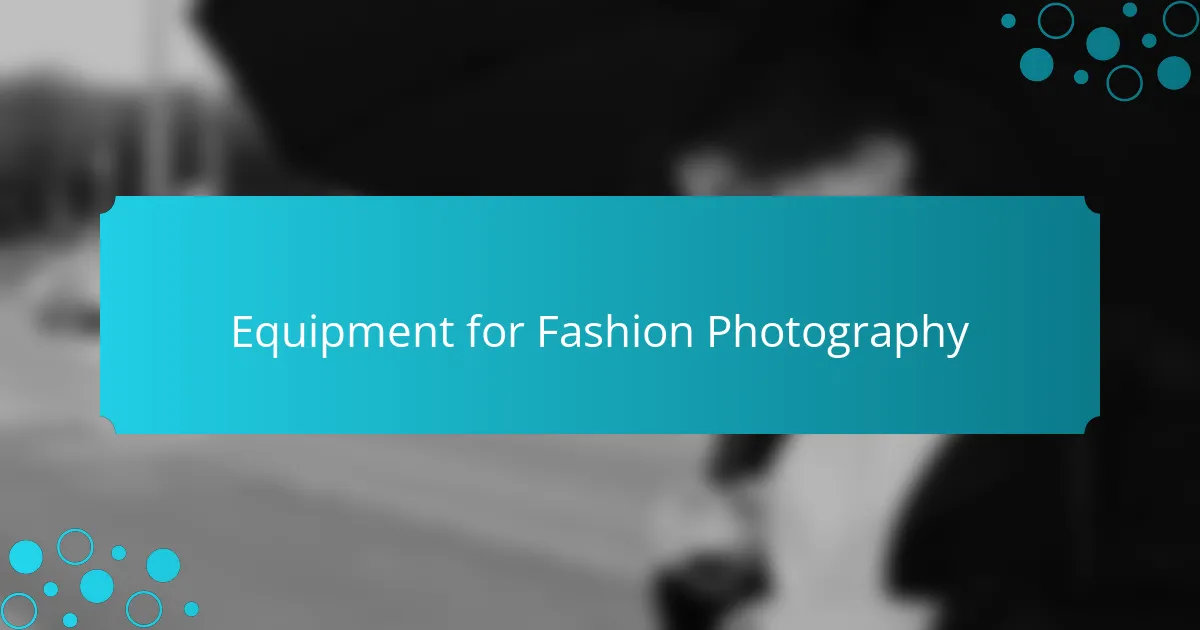
Equipment for Fashion Photography
When it comes to photographing the vibrant atmosphere of Paris Fashion Week, having the right equipment is essential. I found that my DSLR camera was perfect for capturing the intricate details of the garments and the candid moments that unfolded in front of me. The fast shutter speed allowed me to freeze moments, and the lens selection was vital—my 50mm lens became a favorite for portraits, while a wide-angle lens helped me capture the grandeur of the venues.
In addition to the camera, I relied heavily on my external flash and portable reflectors. These tools were invaluable for managing lighting, particularly in the dimly lit venues. I recall one moment when I was able to perfectly illuminate a model against a striking backdrop, thanks to my flash; it made all the difference in the final shot.
Lastly, I always carried spare batteries and memory cards. Losing precious shots due to a dead battery or a full memory card is a nightmare for any photographer. That preparedness allowed me to focus on creativity rather than logistics, making my Paris Fashion Week experience more enjoyable.
| Equipment | Purpose |
|---|---|
| DSLR Camera | Captures high-resolution images with versatility |
| 50mm Lens | Great for portraits and low-light conditions |
| Wide-Angle Lens | Perfect for capturing venues and large groups |
| External Flash | Enhances lighting for clear images |
| Portable Reflectors | Helps manage natural light and shadows |
| Spare Batteries | Ensures you never miss a moment |
| Memory Cards | Provides ample storage for high-quality images |
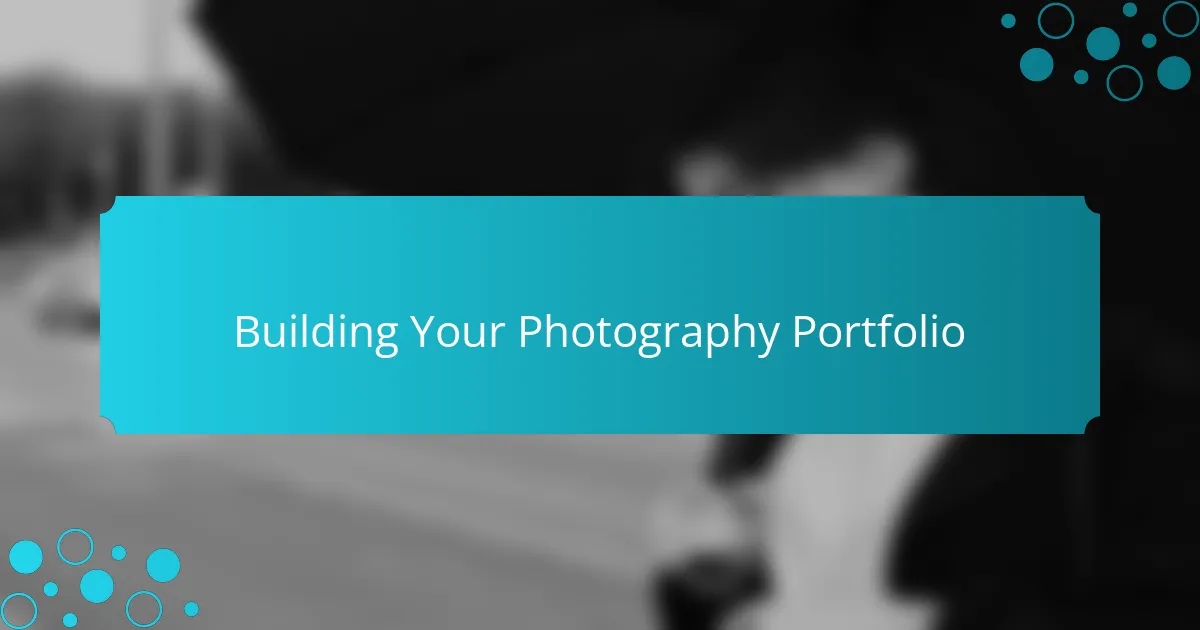
Building Your Photography Portfolio
Building a photography portfolio is a journey of self-discovery, one that reflects your unique perspective in the fashion world. I remember the first time I assembled my portfolio after attending Paris Fashion Week. It wasn’t just about the best shots; it was about curating a collection that told a cohesive story of my experiences, emotions, and artistic vision. The challenge often lies in deciding which pieces to include; have you ever faced that tough choice?
Choosing diverse images is crucial. I found that combining runway shots, behind-the-scenes candid moments, and close-ups of intricate details helped to illustrate the multifaceted nature of fashion. It’s fascinating how a single photo can evoke nostalgia or transport someone to a different time and place. When you select images that resonate with you, they can strike a chord with your audience too.
Lastly, I believe your portfolio should evolve continuously. After every fashion event, I revisit my collection, examining what worked and what didn’t. I recall the feeling of growth each time I updated my work, pushing myself to refine my eye and style. I encourage you to take that step—open up your portfolio, and make it a living thing that grows with your artistry. What stories are you ready to tell through your lens?
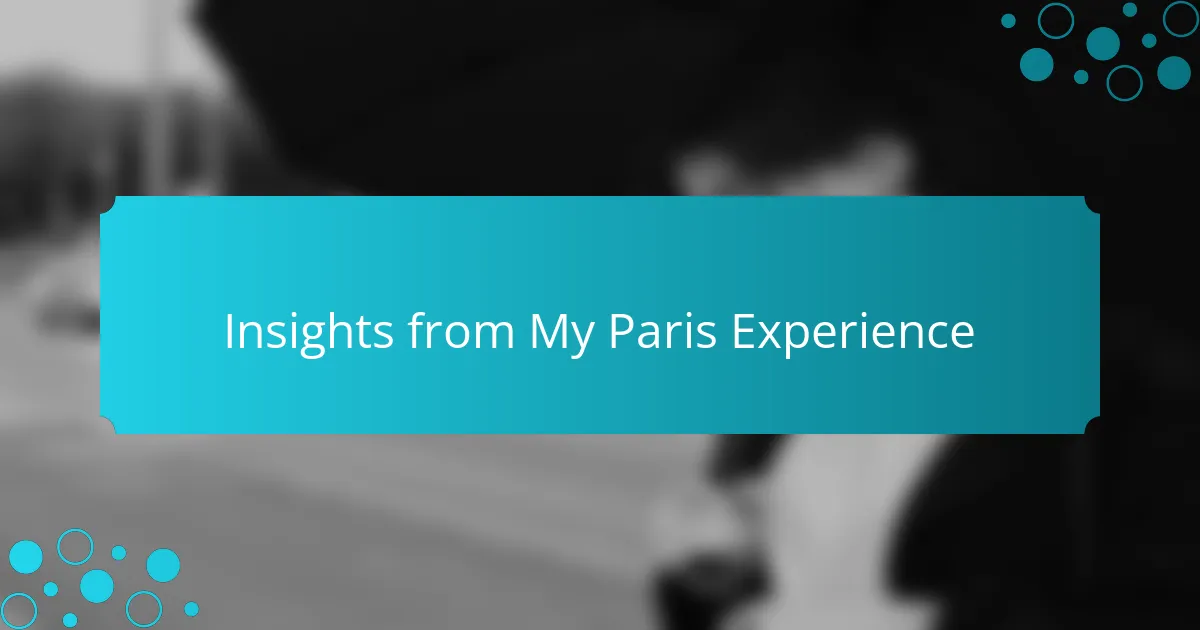
Insights from My Paris Experience
My time in Paris during Fashion Week was an eye-opener. Capturing the essence of the city through my lens offered me a unique perspective on the interplay between style and emotion. I remember standing outside a venue, surrounded by a buzz of excitement as models dashed past, each exuding confidence. It made me realize how fashion is not just about clothing; it’s about storytelling.
Every moment was alive with creativity, yet the experience also reminded me of the pressures within the industry. Watching designers pour their heart into each collection was inspiring, but it also highlighted the relentless pursuit of perfection. I found myself reflecting on the balance between self-acceptance and the industry’s expectations.
Here’s a quick comparison of what I observed during my time in Paris:
| Aspect | Experience |
|---|---|
| Creativity | Incredible bursts during presentations and street style |
| Pressure | High expectations placed on models and designers |
| Influence | A blend of cultural heritage and next-gen vision |
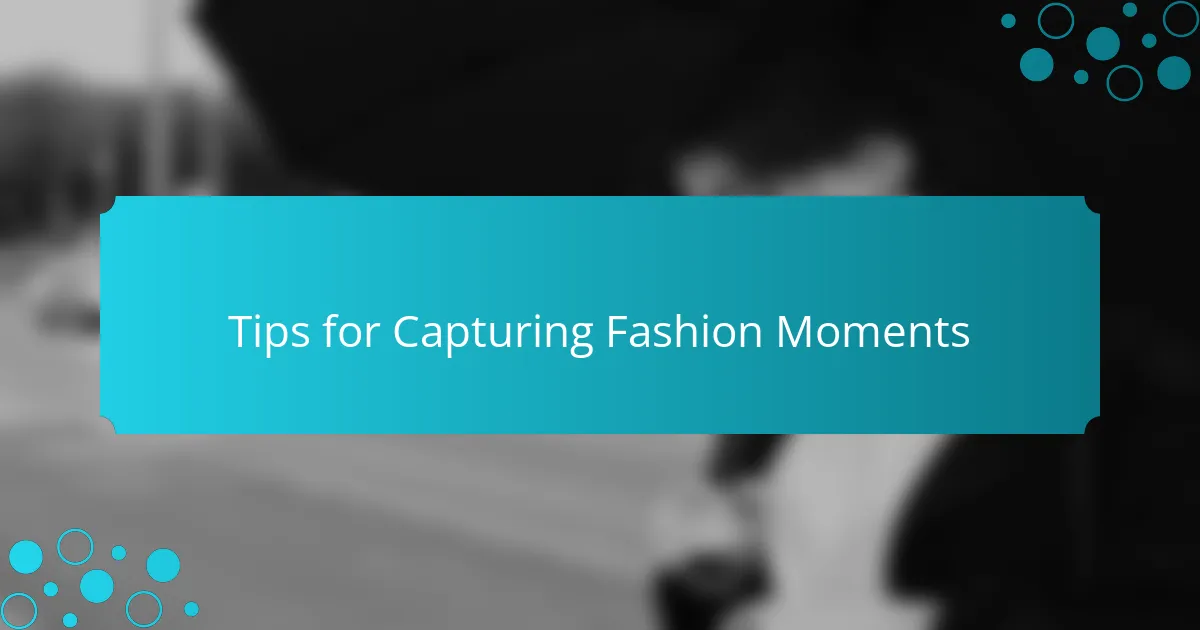
Tips for Capturing Fashion Moments
Capturing fashion moments during an event like Paris Fashion Week requires not just technical skill but also a deep appreciation for the atmosphere and detail. I vividly remember feeling a rush of excitement as I tried to snap that perfect shot of a model gliding down the runway, her silhouette illuminated by the dazzling lights. It’s important to be present and aware of the fluidity of the scene around you, as some of the best moments come unexpectedly.
Here are some tips to help you capture those unforgettable fashion moments:
- Stay Anticipatory: Always be ready for the next big moment; models can turn on a dime.
- Play with Angles: Don’t be afraid to get low or find an elevated spot for a unique perspective.
- Focus on Details: Get close-up shots of accessories, fabrics, or makeup; these can tell powerful stories.
- Use Natural Light: Whenever possible, leverage ambient light for more vibrant shots.
- Be Mindful of Backgrounds: Pay attention to your surroundings to avoid distractions in your photos.
- Embrace Candid Shots: Some of the most genuine moments happen off-stage; catch those interactions behind the scenes.
- Practice Patience: Waiting for the perfect moment can often lead to the most rewarding capture.
